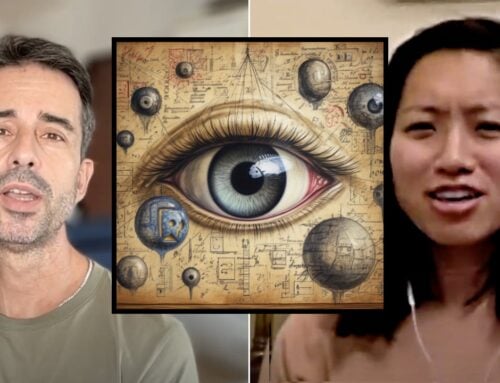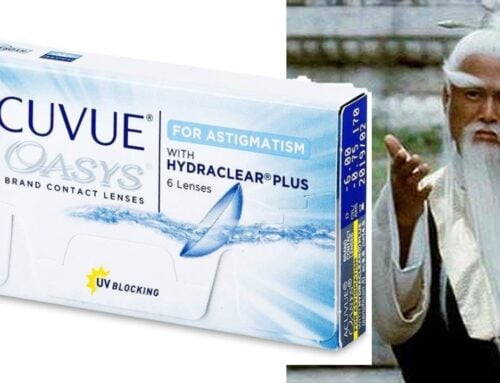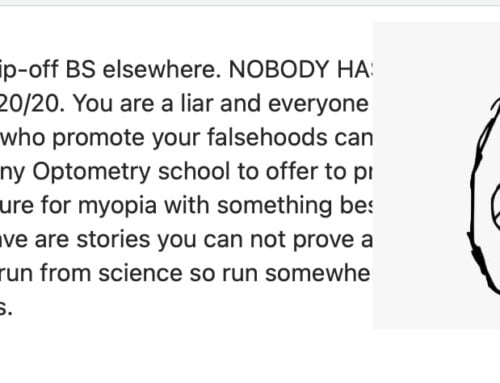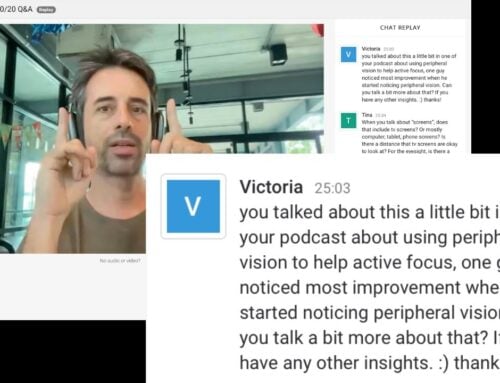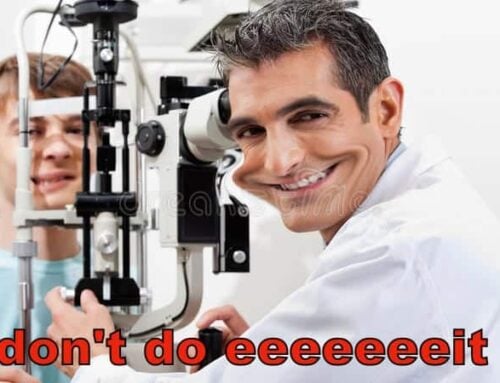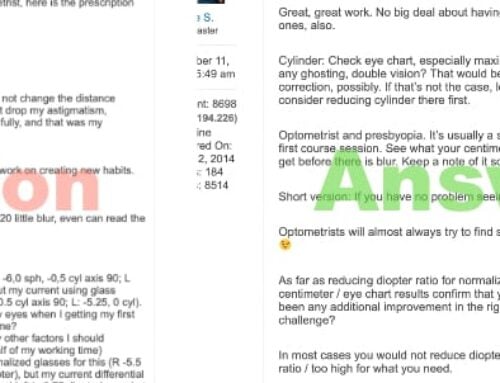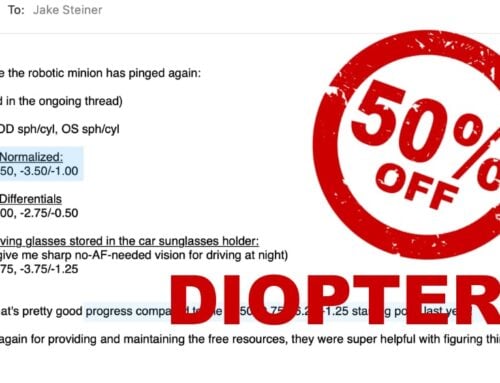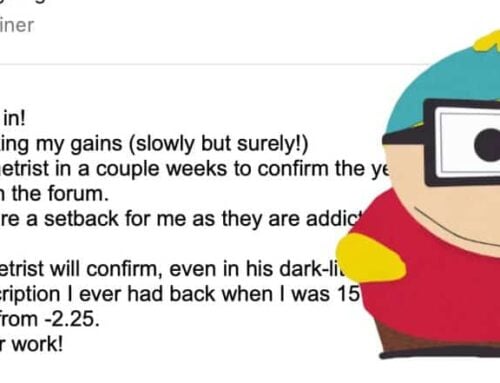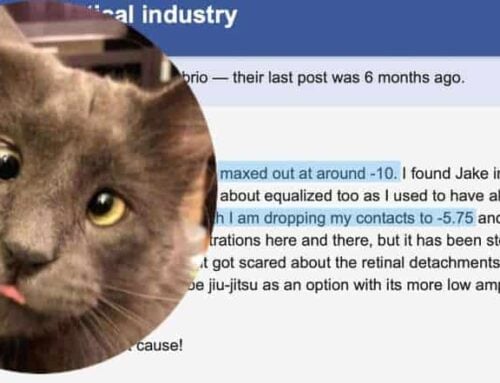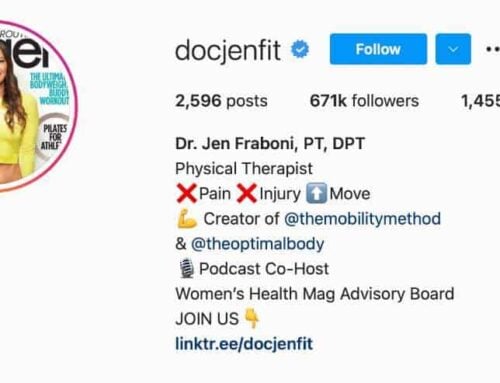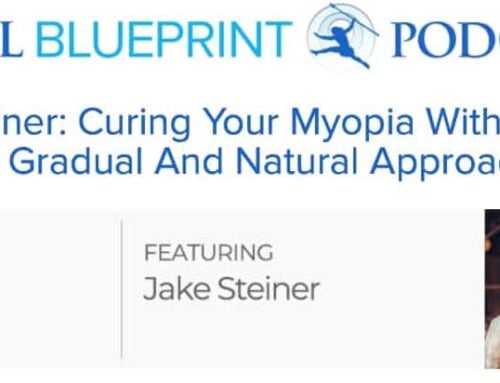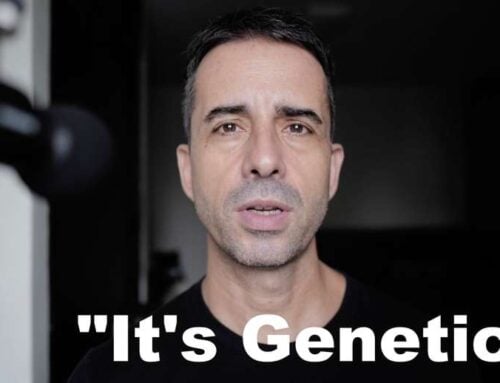*Photo: Marco in Yangon, about to get his first passport
Did you do the 7-day free course? Did you like it? Hate it? Don’t remember it?
Either which way … I need your help! The course is a relative tragedy right now.
There’s a long list from various consultants on things that need improvement on @endmyopia. One that I’ve been ignoring since the dawn of time, anything to do with e-mails. Jake doesn’t like e-mails. And yes, I wrote the 7-day course purposely trying to make it difficult for subscribers. That was counterproductive, but you can’t imagine how much e-mail I get every day, and I was dreading the idea of making all this too easy and promising, and dealing with even more questions.
So I wrote the e-mail course as dense and convoluted and word-count-heavy as I could. Yes, Jakey-eye-guru is a bit of a dickhead, sometimes.
But finally recently I was convinced by insightful and smart people that I need to stop sabotaging things for newbie readers, those who might be skeptical and just barely convinced enough to give endmyopia a shot.
I need to play nicer. I know.
The e-mail course needs some rewriting. And don’t worry, I’m not asking you to rewrite it for me. I’d like your help though, in making it great. Imagine you’re just finding this site for the first time. You are curious, you sign up for the free course. What would you want to see, day by day, to get you closer to where you are right now, today, enjoying this site?
I’ll share with you the outline of a revised e-mail course here. Let me know what you think. That can be anything from notes, to grunts (however you want to deliver those), to full blown drafts (yes please, I really dread explaining all this, all over again – you’ll be my bestest friend for all ever).
Here’s the general outline, as I’m thinking currently:
Day 1: Biology Basics
Much lighter on the word count, just the basics on how your eye works (light focusing on retina, the role of the ciliary muscle and flexible axial length). Links to unbiased sources for those who want to research, review, verify in more detail.
How lifestyle interferes with the biology, causes the first part of myopia.
How optometry interferes with the biology, by masking the symptom and in the process creating more myopia.
Day 2: The Role Of Eye Strain
The key to getting invested in your eyesight, is a first hand experience showing you that what you were told by the mainstream, is wrong. By this I mean, measuring centimeter. Or at the very least, starting out with pushing your maximum reading distance and comparing it in different lighting conditions and early vs. late in the day.
You have to see for yourself that your vision isn’t static. That’s the first step to really start questioning those diopters.
A quick primer on what a diopter is, and how you can measure it with centimeters.
A printable eye chart.
Day 2 is all about showing you that your eyesight changes, based on your environment, and strain. Showing you how to measure centimeter, how to use an eye chart to compare your “before and after” vision, throughout the day.
In my experience most people who do this, don’t stop here. Once you open this door you want more.
Day 3: Pseudo Myopia
If you did centimeter, you’re probably ready for more lessons, curious to know what’s going on.
A quick overview of why eye exercises are popular and why they only work short term. Talking a bit more about the ciliary role, and ciliary spasms, and why putting glasses over that symptom is just the start of becoming a life-long myope (and customer).
Making the distinction that this isn’t gong to be about eye exercises, but rather understanding the root cause, and reversing the things that caused the problem, with habit changes (and knowledge, rather than blindly following some “exercise plan”).
Science links to pseudo myopia and how to do your own research on Google Scholar.
Ways of checking your own ciliary spasm, which happens every single day (for many people at least). Finding a way to compare your morning vision to your vision after a full day in front of screens. Finding the far point of your vision, comparing it, be it with an eye chart or centimeter. Taking an hour walk outside, focused on distant signs, comparing your vision after a nice long outdoor walk, to just before.
Pointing out that this isn’t what will fix your eyesight, but simply that in order to improve your vision, you have to understand and experience and reduce the effects of close-up strain, first.
Day 4: Glasses – The Deal With The Devil
Learning of how glasses change the focal plane in your eye, in a static 16-century understanding of eyesight, kind of way. It works, but there’s a big price.
Explaining the basics of how the eye adjusts in axial length, based on focal plane stimulus. The basic and simple reason your eyes continue to “get worse” once you start wearing glasses. Explaining the fundamental rift between retail optometry and vision science. A quick fix, that people want, profit, vs. the price you end up paying long term.
Links to axial length biology and how to do more of your own research.
Explaining that axial change goes both ways, and is based on stimulus. Stimulus made your eyes “worse” (increased the axial length), but that this goes both ways (including unbiased science on this, since it’s such a contentious subject with optometrists).
Day 5: Don’t Monkey With Lenses
Now you know enough to be dangerous (to yourself).
You need to learn about the diopter bubble and your primary focusing distance. What focal plane you need for close-up, and what you need for distance. You need to know that you’re stepping off the reservation if you do this, that you’re doing things that the mainstream doesn’t want to allow you to do. You’re on your own with this (not really but you know …), and you need to learn before starting to mess around.
Look at centimeter again, and look at what you need to wear for close-up. A little science on hyperopic defocus and why you really want to avoid too many diopters for your close-up distance.
Realize that you want to address your close-up distance first, and leave distance alone till you have a complete understanding, and at least a month of close-up addressed (including eye strain), before moving on. Learn that success is in slow, methodical, considered approach, not buying a bunch of reduced lenses on impulse.
Homework to sort out your close-up focal plane and acknowledge that you’re being an optometry dissident in doing so.
Day 6: Habits & Logs
Success = successful habits and routines.
You need to learn about active focus. It’s a multi week (or longer) learning process, compressed into a 7 day course. Don’t skim and cherry pick. Get the right close-up glasses, then learn how to do active focus.
Active focus links. Explain how focal stimulus helps both your ciliary muscle and induces axial change response.
Keep a log of results. Realize that half ass lens changes aren’t the answer. That lenses aren’t the answer at all (no plus lens therapy, etc), but rather strain reduction and positive stimulus, packaged as sustainable routines and habits. Realize that these magical 7 days are about learning about your biology, and using that knowledge to address bad habits and poor focal plane recommendations.
Day 7: Distance Vision
Learn how fixing distance vision requires the use of distance vision. Not eye exercises, not pills, not magical lenses, but actually spending less time in front of screens, and more time outside, challenging your eyes for distance vision.
Mark your calendar to explore your normalized (distance vision glasses) after 4-6 weeks after you start with the close-up glasses. Save this e-mail for that time.
Discuss again the diopter bubble and how much correction you might need for appropriate distance vision. Use your experience with differential to assess what you need for distance. Realize to maintain diopter ratio so the relative focal plane remains the same.
Learn about initial larger reduction and subsequent smaller ones. Obey the 4-6 week minimum rule. Measure progress. Give us feedback.
BackTo20/20 option tomorrow.
Day 8: Miscellaneous
Optimize indoor lighting, ideally full spectrum.
You need at least an hour a day outside. Start the whole thing with five minute breaks every 20-30 minutes, regain strain awareness, then limit your close-up to less than 3 hours before a long distance break.
Don’t drive others crazy with your new discovery. They’ll just think you’re nuts.
Don’t antagonize optometrists. Either buy lenses online or find a supportive optometrist. Good interview question is “can you prescribe me lower diopters for my computer use, I get a headache otherwise”. Explain how to find an optometrist who won’t be a dickhole as you work on your eyesight.
Get on our FB group for likeminded support, a place to vent and be excited and share stories.
BackTo20/20. If you want structured approach, like the 7 day but much, much more detailed. Includes forum access and with it, all the questions, progress reports, threads from all students. See any particular students complete history of working on their eyesight. Get me to answer your individual questions and offer tweaks and nudges.
(The goal isn’t to sell BackTo20/20, but just to include those who prefer a structured approach – small scale individual interaction, which also provides a lot of the content for the free daily guides – blog – our data collecting efforts for the natural myopia control study. Working reasonably well so far since the vast majority of participants use just the free DIY tools, and a minority prefer to work with me directly. I get anxious about people assuming this is “all about the money”, so I keep making the point about free resources).
Clear point that it’s not necessary to pay for things. Everything you need is in the blog. Question is DIY vs. structure, of figuring it out or asking Jake.
Go see a proper ophthalmologist (not optometrist with a large retail space selling glasses) for annual checkups. Get annual checkups. Be sure to wear appropriate correction for driving and any activities requiring maximum visual acuity. Don’t be stupid, don’t rush things. Also Jake has no rules against worshipping images of his likeness, so small shrines, candles and such, perfectly acceptable.
That’s it.
Feedback? Remember, you’re helping out those who find this site in the future! Pay it forward, right? ;) Drop me an e-mail or comment in the thread in our FB group.
Cheers,
-Jake




